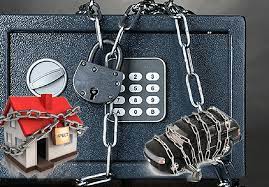I am Mariya Borevich, your personal lawyer. My primary goal is to help clients find optimal solutions to current legal issues, ensuring reliable protection of their interests. I specialize in family, civil, and military law, which allows me to effectively handle a variety of situations and cases. In family law, I provide support in resolving issues related to divorce, property division, establishing and challenging parental rights, alimony, and child custody. I understand that these matters are often emotionally complex, so I always strive to find the most delicate and fair solutions for all parties involved. In civil law, I assist in settling disputes related to contracts, property rights, compensation for damages, inheritance, and other issues concerning the protection of personal and property interests. Special attention is given to military law — supporting servicemen, protecting their rights and interests related to military service, social guarantees, and legal disputes. This area requires deep knowledge and understanding of the specifics of military service and the legislation regulating it.
Seizure is a legal measure by which property or a person is subject to restrictions in their will or movements based on the decision of a court or other authorized body. This can happen as a result of a violation of the law, a court order, or on other legal grounds. Types of arrest can include:
1. Seizure of property: This is when property such as real estate, cars, money in bank accounts, etc. is subject to restrictions in disposition or disposal by court order. Seizure of property can be used to enforce a judgment or for other purposes, such as preventing the sale of property until a dispute is resolved.
2. Arrest of a person: This is when a person is subject to restrictions in his freedom based on a court decision or national law. For example, this may happen if a criminal suspect is arrested for further investigation or trial.
The arrest can be temporary or permanent, depending on the circumstances of the case and the decision of the competent authorities. It can also be canceled or removed if it turns out that the circumstances that caused the arrest no longer exist or if the court makes a corresponding decision.
A criminal case is a legal process that is conducted in accordance with the criminal legislation of the country in connection with the commission of a crime. The main stages of a criminal case include:
1. Investigation: The police or other law enforcement agencies collect evidence and investigate the crime, including gathering witness statements, expert reports, and other evidence.
2. Suspicion: If there is enough evidence, a suspect may be detained or suspected and a criminal case may be filed against him.
3.Filing charges: Prosecutors or other law enforcement agencies may file charges against a suspect based on evidence gathered.
4. Judicial investigation: The case goes to court, where a judicial investigation is conducted with the participation of the prosecutor, the accused, his defense attorney and other parties.
5. Verdict: After the investigation, the court issues a verdict in which the guilt or innocence of the accused is determined and the appropriate punishment or measures of influence are imposed.
6. Appeal and cassation: In case of disagreement with the court's decision, the parties may appeal to higher courts for appeal or cassation.
A criminal case has serious consequences for the accused, so it is important that all stages are carried out in accordance with the procedures and legal rights of the parties.
Removal of seizure from property in criminal proceedings. In criminal proceedings, the seizure can be removed from the property in various circumstances, usually by decision of the court or competent authorities. Here are some possible scenarios where the arrest could be lifted:
1. Change of circumstances: If the circumstances that led to the seizure of property have changed (for example, if it turns out that the property is not related to the crime or if the grounds for the seizure have been removed), the court may decide to lift the seizure.
2. Agreement of the parties: If the accused, the prosecutor or other interested parties enter into an agreement to remove the attachment from the property, the court can approve this agreement and remove the attachment.
3. Bankruptcy: In some cases, the lien can be removed in connection with the bankruptcy procedure, especially if the property is attached in connection with the demands of creditors.
4.Court decision: The court may decide to remove the attachment from the property if it finds that such a decision is no longer necessary or appropriate in the given situation.
Removal of seizure from property usually occurs by court decision after consideration of relevant arguments and evidence in the case. It is important to take into account that the procedures for removing the arrest may differ depending on the legislation of the country and the specific circumstances of the case.
The removal of the attachment from the mortgaged property can take place in cases where the borrower has fulfilled his obligations to the creditor or when other circumstances have arisen that allow the court to make a decision on the removal of the attachment. Here are some possible foreclosure scenarios:
1. Repayment of the debt: If the borrower has fully repaid the debt to the creditor, this may be grounds for removing the attachment from the mortgaged property. In this case, the borrower must present documents confirming the fact of full repayment of the debt.
2. Agreement of the parties: Sometimes the creditor and the borrower can agree on the removal of the attachment from the mortgaged property. This can happen, for example, in the case of debt restructuring or the conclusion of an agreement on the resolution of a dispute.
3. Court decision: If the borrower or other interested parties have submitted an application to the court for the removal of the seizure, the court may make a relevant decision based on the circumstances of the case.
4. Invalidity of the seizure: If the seizure was imposed illegally or in violation of procedures, the court can declare it invalid and decide to lift the seizure.
In each specific case, the removal of the attachment from the mortgaged property can take place in accordance with the requirements of the law and on the basis of the circumstances of the case.

































